I thought I’d write a guide to the The Three Statements of Garab Dorje. This teaching has been so fundamental for me in relation to Dzogchen. It’s extraordinarily concise, but in a way all of Dzogchen is contained there in essence. The whole Dzogchen path opens out from these statements.
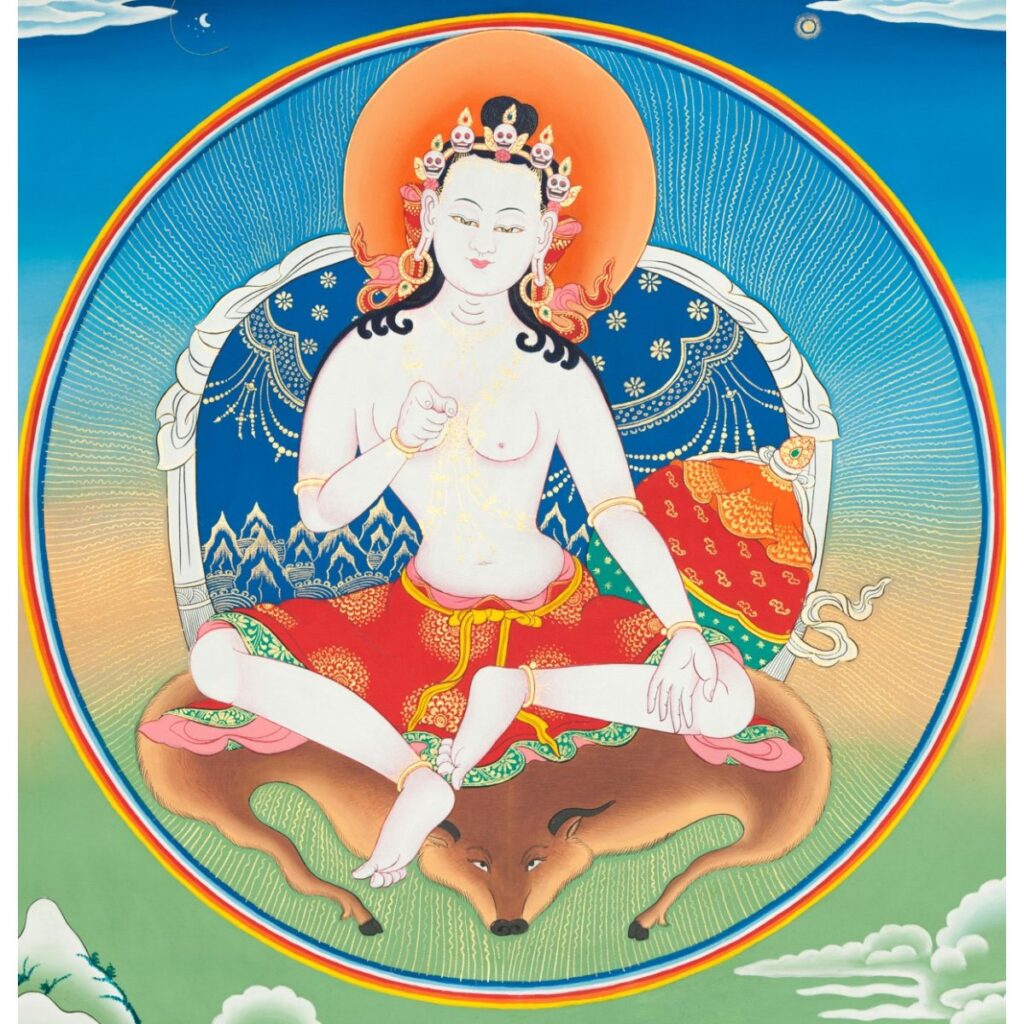
The Three Statements of Garab Dorje are also known as “Hitting the Essence in Three Words” or “Striking the Vital Point in Three Statements”.
What are these fundamental, pith teachings on Dzogchen that he gave us?
- Direct Introduction to Rigpa: The first statement is really the direct introduction of the practitioner to the nature of their own mind, to Rigpa. This is the recognition of your true or fundamental nature, which transcends conceptual thought and is the innate primordial wisdom. Without this recognition you cannot practice Dzogchen.
- Decide Upon One Thing: The second statement emphasizes the importance of making a firm decision to abide in the state of Rigpa. It involves recognizing that all phenomena, whether Samsara or Nirvana, are manifestations of Rigpa’s own play, and thus, there is nothing other than the continual flow of Rigpa. You know in your depths that there is no higher realisation of practice than this. You could say that this determination takes you onto the path that is no path.
- Confidence in Liberation: The third statement encourages you to have confidence in the spontaneous liberation of arising thoughts and appearances. This means recognizing that whatever thoughts and appearances arise, they self-liberate in the expanse of Dharmakaya, where emptiness and awareness are inseparable. They are not an obstacle, they are the play of the very ‘thing’ itself!
As I say, these statements are considered the essence of Dzogchen practice, providing the promise of realization and liberation. If I could only have one teaching it would be this one.
Contextualising the three statements
For sure my background is more in Mahamudra, so when I approach this core teaching of Dzogchen I cannot help myself by utilising this schema which framed my understanding of Mahamudra. But it’s valid approach and is used across Dzogchen and the Vajrayana approaches as well.
Ground, path and fruition
The ground is really a description of the nature of reality, or you could say the nature of mind, as all our experience is mind – we do not directly experience world ‘out there’. The ground is how things truly are. This is a crucial orientation. You could say it sets our course.
The path is our means to gain access to the ground, rather than us being lost in ignorance, delusion and our push-pull of want / don’t want that drives so much unnecessary suffering we experience.
Fruition, or result describes what we aspire to achieve with the path – which is the full realisation of the ground, such that we are utterly transformed – liberation.
You could say – I would say – that the three statements of Garab Dorje set out the path in Dzogchen. Of course in doing so they implicitly refer to both the ground and result, without which a path would make so sense.
View, meditation and conduct
These three further refine the path we’ve already looked at, and break it down. How we practice is based on these.
First there is the view, or Tawa in Tibetan. You could say this is at once the lens to adopt, and the result itself, i.e. a way of being. It’s not a ‘thing’ to look at, nor just a perspective – it’s more than that. It’s a result in progress – the degree to which you can manifest fruition at that point.
As you bring view to mind, you bring fruition to mind to the degree that you can.
Meditation, or Gompa is how we act on this view. This is to a degree a non acting, as non-meditation is a key aspect of meditation in Dzogchen. Without mudding the waters too much though meditation does refer to how we systematically work with the teachings, formally if you like.
Conduct, or Chöpa is then how we act on our view and meditation. It’s what we do outside of formal meditation practice. How does practice proceed in the rest of our life off the cushion?
As I said I see the Three Statements of Garab Dorje as primarily a path teaching, and I find it helpful to see them in terms of view, meditation and conduct, the three aspects of the path expanded.
Let’s look at the 3 statements in more detail in this light ….
But first I want to share another image of Garab Dorje at this point. I’m acutely aware that my own inclination is very visual as well as conceptual. It’s also very faith based, as well as very meditation / wisdom based. In that sense for me ‘a picture tells a thousand stories’, and gazing at Dharma images is every bit as potent as words which point the way.
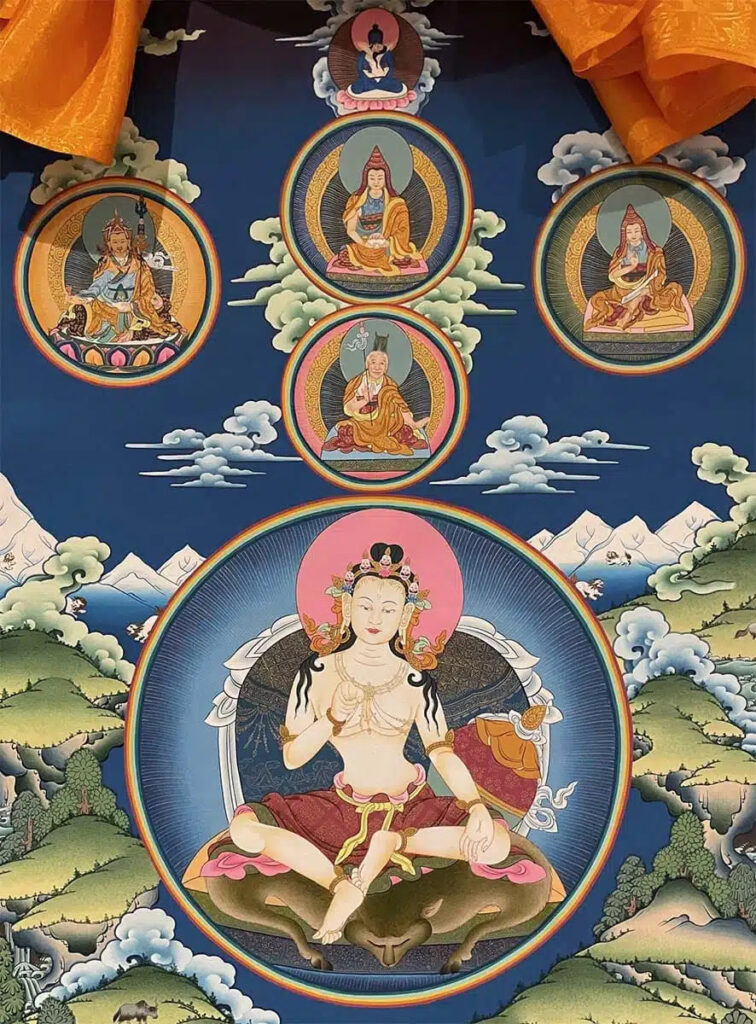
The first statement of Garab Dorje, “direct introduction to Rigpa”
The first statement of Garab Dorje, “Direct Introduction to Rigpa,” is really foundational to Dzogchen practice. If you don’t have this you do not really have a basis for Dzogchen practice. Without it you are likely to sit in deluded mind thinking you are practicing Dzogchen, rather than practicing …. what …. delusion?
The direct introduction to Rigpa introduces the practitioner to the nature of their own mind (Rigpa). Understanding how things truly are and what the fundamental nature of your mind is, is very much what liberates. This first step is crucial because it sets the stage for the entire Dzogchen path, that takes us to liberation.
Here’s a more detailed explanation:
Direct Introduction
- Nature of Rigpa: Rigpa is the primordial, non-dual awareness that is the fundamental nature of the mind. It is beyond conceptual thought and dualistic perception. You could say it represents the innate clarity and purity of consciousness. Primordial purity, emptiness, but also innate wakefulness – clarity or luminosity. I always come back to Luminous Emptiness.
- Transmission from a Qualified Teacher: The direct introduction to Rigpa is typically given by a qualified Dzogchen master. The transmission is not an intellectual explanation but an experiential pointing-out instruction that allows the practitioner to recognize rigpa directly. Their words, actions, and perhaps most importantly, being, are what prompts us to this recognition. Life can be strange of course, and for some people the teacher, or guru isn’t a person in a formal sense. Or maybe not present in person – perhaps over video. However it happens there is a transmission and it comes, if you like, from something that embodies the nature of Rigpa, the realisation of Rigpa.
- Recognition of True Nature: During this introduction, the practitioner is guided to recognize their own mind’s true nature. This recognition may well result in a sudden, clear realization of awareness that is self-cognizant and self-luminous. But also absolutely empty, entirely groundless. It’s not one or other – they are inseparable, or nondual.
- Beyond Conceptual Mind: The introduction helps the practitioner distinguish between ordinary, conceptual mind and Rigpa. While the conceptual mind is characterized by being bewitched by thoughts and dualistic perceptions, Rigpa is the non-conceptual, direct experience of awareness itself. This is the seeming paradox for the conceptual mind we’ve always relied so heavily upon. Rigpa is at once the recognising and the recognised. When you rest in this empty awareness, this luminous emptiness, it is as if what is being rested in is recognising itself. Being itself, in full recognition of itself
- Foundation for Further Practice: Recognising Rigpa is the foundation for all subsequent Dzogchen practice. Once Rigpa is recognized, you are encouraged to stabilize this recognition through meditation and to integrate it into daily life – the conduct aspect I mentioned above.
This direct introduction is considered a profound and transformative experience, as it provides a glimpse of the ultimate nature of mind and sets the practitioner on the path to liberation.
The first statement and view /Tawa
There’s an alignment between this Direct Introduction to Rigpa, and Tawa / view. Once we have ‘seen’ Rigpa, then we have view or Tawa. This then becomes the basis of our practice. We can rest in Tawa, deepen Tawa, and constantly return to Tawa. You are not going somewhere else, in a sense, more like coming back home. The view is both how to see ‘home’, and ‘home’ itself. The practice in Dzogchen is not so much the cultivate of various positive conditions and states of mind, leading to insight and release. It’s more about returning again, and again and again to Tawa, and resting there. It’s not something to gain. It’s something to discover.
In this way view is aligned with the first statement of Garab Dorje. This direct recognition of one’s true nature or Rigpa is indeed the view. It’s a direct glimpse or introduction to your Buddha nature, and thus establishing this view forms the basis for all subsequent practice.
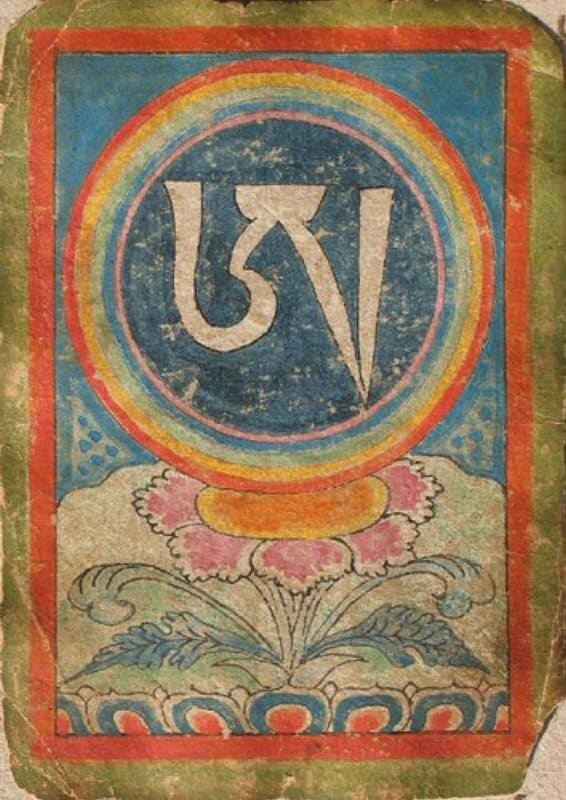
The second statement of Garab Dorje, “decide upon one thing”
The second statement of Garab Dorje, “Decide Upon One Thing,” focuses on cultivating unwavering certainty in the recognition of Rigpa, the true nature of mind. This step is crucial for stabilizing the initial recognition gained in the first statement. A glimpse sets you on the path, as it were. Without it, you are not on this path. But a glimpse is not enough. It is not liberation.
Interestingly it give a direct flavour of liberation, a first taste. It’s not like liberation is somewhere entirely else, something that only comes right at the end of the road. A bit like the most common conceptualisation of the Christian or Islamic approaches. The goodies largely come at the end, with heaven. I know I simplify for effect in order to make a point. I am sure that those paths are a bit more nuanced than that!
Let’s dive into the second statement “Decide Upon One Thing” in more depth:
Decisive certainty
- Non-Dual Presence: The practitioner is encouraged to maintain a continuous awareness of the non-dual state of presence, this luminous emptiness, that is beyond conceptual and dualistic thinking. This involves recognizing that all phenomena, all perceptions, all appearances, whether Samsaric or Nirvanic, are manifestations of the play of one’s intrinsic awareness, of Rigpa. There’s the rub, you could say. You don’t need to escape from or abandon Samsara, and try to get to Nirvana. Both of these arise from the same nature of mind. The difference is in recognising the nature of these. And then abiding continuously in that recognition. The second statement is this continuous abiding.
- Avoiding Doubt: It is essential to eliminate any doubt about the nature of Rigpa. It’s very natural to doubt our insight into this nature of mind. Ironically, or even especially as what we have now ‘seen’ is actually utterly ordinary and plain, in a way. It’s not all the fireworks, kundalini and apocalyptic visions. It’s more the simplicity of the timeless and placeless is-ness that lies beyond, but also entirely makes up all appearances that seem to arise. This avoidance of doubt means cultivating a deep, experiential understanding that the initial glimpse of Rigpa is the true condition of mind, and indeed of all reality, and not allowing the conceptual mind to question or analyze this recognition. You could say ‘when you know, you know’ but I don’t think it’s quite that simple. The seeing is indeed of something that it’s hard to mistake or have any doubt over. Yet, speaking at least for myself, it was so close to home, and so overlooked, that I almost could not believe this could possibly be it. Especially as much other Buddhist practice focussed so much on creating various states of mind, rather than just simply seeing and resting in the nature of all that. Just as the introduction to Rigpa is critical, so is the inner decisive ‘decision’ that there is no better practice or realisation that this.
- Stabilizing Rigpa: You must then choose to remain in the state of presence moment to moment, thus stabilizing the recognition of Rigpa through practice in daily life. Setting any doubt aside, rest in this Rigpa, this recognition, that is at once seemingly the recognition, and what is recognised! This stabilisation involves integrating the realization of the non-dual unity of emptiness and awareness into all aspects of experience. Regardless of what is appearing to mind, rest in this nondual recognition of luminous emptiness, empty luminosity.
By deciding upon this singular focus, you deepen your realization and ensure that your practice remains grounded in the direct experience of Rigpa, leading to a stable and enduring understanding of your true nature. And hence liberation.
I feel funny saying deepen, in a way. It’s true, it seems to me – you do deepen your recognition and realisation. But what isn’t true, I think, is that you change anything. Mind is how it is, your true nature is how it is. Nothing is being cultivated or changed, as conventional approaches to meditation and the path approach things. You deepen the seeing and deepen the resting. But that which is seen, that which is rested in, that which you ‘be’ does not change at all. It remains pristinely pure, awake, empty awareness. Unborn, and unceasing.
Just to circle back for a moment on the Avoiding Doubt. It’s not really a conceptual decision, or one from dualistic mind which makes this ‘decision’, that allows for the letting go for doubt. Words are tough to find here. It’s like an experiential certainty. A certainty born of experience, or born of recognition. Trusting in the recognition. Being the recognition. And letting go.
And in terms of the stabilising Rigpa, I’d be tempted to say that we continually bring ourselves back to this, habituate ourselves to it, such that that we start to live from this, from the light or flavour of this. As if it permeates more and more our experience. And our actions flow from it.
The second statement and meditation / Gompa
So the second statement equates to meditation in the schema of path, meditation and conduct. It’s really the nub of what we need to do. Once introduced to Rigpa the focus is on cultivating unwavering certainty in this recognition. Meditation is the way to stabilise this recognition of Rigpa. You need to stabilise it to be able to effectively live from it outside of meditation.
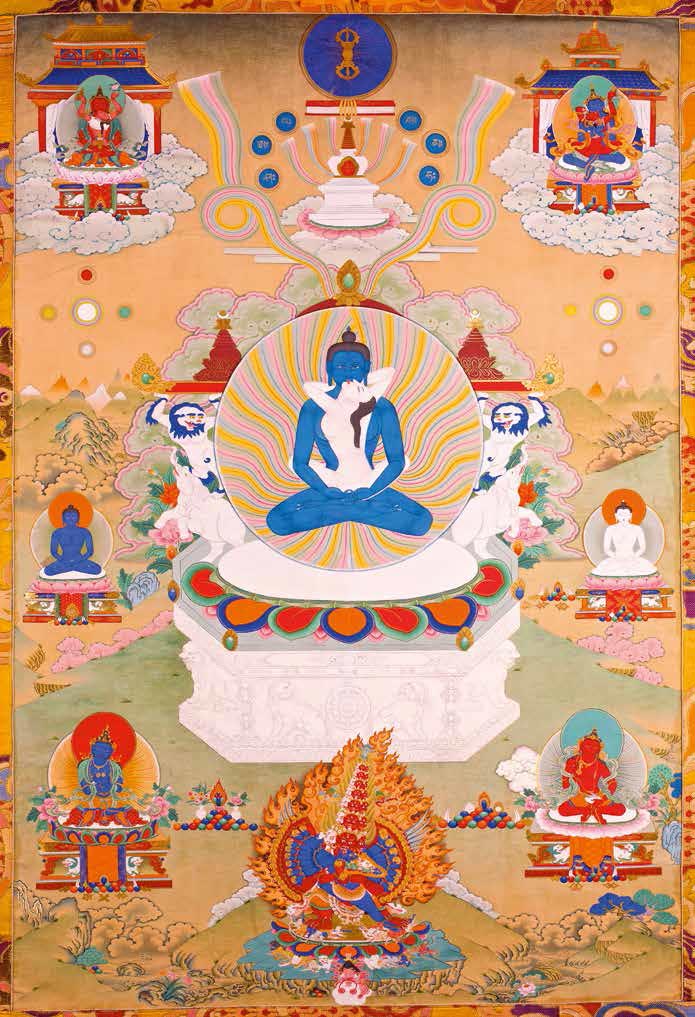
Ok, let’s have a deeper look at the third statement of Garab Dorje in a bit more detail.
The third statement of Garab Dorje, “confidence directly in the liberation of rising thoughts”
The third statement of Garab Dorje, “Confidence directly in the liberation of rising thoughts,” is a crucial aspect of Dzogchen practice. Are they not all crucial?
This third statement emphasizes the spontaneous self-liberation of thoughts as they arise, without clinging or attachment. You don’t have to make thoughts go away. Or change them into different ones, if you don’t think they are skillful ones.
You don’t have to liberate them, in other words. Their very nature is to self-liberate. Their nature is non-different from the nature of mind itself – luminous emptiness. So let them be. They never left that nature.
Here’s a deeper look at some aspects of this third statement:
- Recognition and Liberation: The practice involves recognizing the nature of thoughts and appearances as they arise and allowing them to self-liberate. This means that thoughts, whether positive or negative, dissolve naturally without leaving any trace, much like writing on water. They are empty through and through – look and you will not find them when they are there. And when they leave there is again no trace. What an almighty relief this is, if your meditation and practice was previously life or death attempting to change your messy mind into something entirely different!
- Avoiding Dualistic Meditation: It is important to avoid trying to fall into a state of mere mental stillness or quiescence, which can lead to attachment or aversion. So many paths to meditation take this approach. Instead, you should maintain a natural mindfulness that recognizes the true nature of thoughts, allowing them to liberate spontaneously. Without making it more complicated that it actually is you are not just aware, as it were. You are aware and in that being aware you are being aware of their nature, at one and the same time. But these are not two separate things.
- Integration with Rigpa: The arising and dissolution of thoughts should occur within the expanse of Dharmakaya, where emptiness and awareness are inseparable. This integration ensures that all experiences, whether Samsaric or Nirvanic, are seen as manifestations of Rigpa’s play. So as I said you aren’t just aware, you are aware in a particular way, a way that is very much the nature of the thing itself. It sounds a little complex but when you ‘get it’ it’s so simple, so direct.
This approach leads to a state where negative emotions and thoughts transform into wisdom, and practitioners experience liberation without effort or renunciation. What a relief this can be too, if your background is Sutric in origin and the model there is fundamentally renunciate. You are not renouncing Samsara and striving for Nirvana. Both these are inseparable from the nature of mind – it’s just one is seen clearly – Rigpa, and the other lacks this clear seeing – Marigpa.
The third statement and Conduct / Chöpa
This third statement is then very much related to the Conduct or Action part of the Path. It teaches us how to integrate all aspects of our lives and all activity into this Dharma path. Complete integration of Dzogchen into our daily life. Nothing need be outside of this. Nothing is outside of practice. This is where you want to be, where you whole life is free and liberated.
First transmission of the three statements of Garab Dorje
Circling back to context again, now that we understand what the Three Statements are, and how we should work with them, let me say a little about how they came about. At least, as the sources teach this.
Garab Dorje was born in the Oddinyana area, now known as the Swat Valley. At the end of his life a famous scholar from Nalanda University came to debate him, as his teachings were considered highly controversial. The implication of the teachings for cause and effect, for karma was especially controversial.
That scholar who visited him was Manjushrimitra. It is said that Garab Dorje gave Manjushrimitra these Three Statements as his final testament. Indeed, more than that, they were given to Manjushrimitra as Garab Dorje was passing into the ‘Body of Light’, i.e. attaining the Rainbow Body.
The sources say there was more! The statements were written on a golden scroll which descended into Manjushrimitra’s hand. On seeing the statements he was said to have attained the same realisation as his new master, Garab Dorje. Such a beautiful story.
They then went on to become absolutely foundational for the Dzogchen lineage and teachings, almost as the pith of the pith.
What are the key dzogchen texts which elaborate on these three statements?
There is one text commentary text which stands head and shoulders above all others, at least to me. That is ‘The Special Teachings of the Wise and Glorious King’, by Patrul Rinpoche.
The Special Teaching of the Wise and Glorious King – Patrul Rinpoche
Written in the 19th century, this text provides a detailed commentary on Garab Dorje’s Three Statements. It is considered one of the most important instructions for the practice of Dzogchen, as it captures the essence of the Trekchö practice.
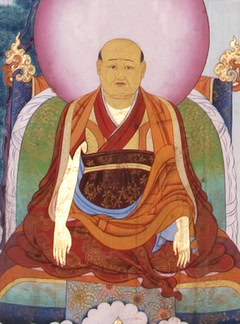
Patrul Rinpoche provided a root text for The Special Teaching of the Wise and Glorious King. Though it elaborates on the Three Statements it is itself relatively pithy. So with his infinite compassion he wrote a full commentary on his root text! This is often the place where people start, once they’ve had the direct introduction to Rigpa.
One could provide a guide to the commentary itself, but just in brief a few notes on how Patrul Rinpoche presents these 3 points.
1. Introducing Directly the Face of Rigpa
Patrul Rinpoche describes the process of introducing the practitioner to the nature of Rigpa, the pure awareness of Dharmakāya – the Direct Introduction. This involves relaxing the mind, releasing thoughts, and using techniques like the sudden utterance of ‘phat!’ to shatter ordinary perceptions, leading to a direct recognition of Rigpa. The stress on relaxation is really fundamental, not just in the direct introduction, but also in Deciding Upon One Thing.
2. Deciding Upon One Thing
The text emphasizes maintaining continuous recognition of Rigpa in all situations, whether in movement or stillness, happiness or sorrow, however the eight winds blow. It further stresses the importance of recognizing the Dharmakāya and remaining in this state without distinction between meditation and post-meditation. Formal practice on a cushion or busy in activity in life makes no difference – the aim here is clear. This then ensures that you reach the point of deciding with absolute conviction that there is nothing other than this empty awareness. Deciding not conceptually, as mentioned before, but experiencially. This brings about Unwavering Certainty.
3. Confidence Directly in the Liberation of Rising Thoughts
Patrul Rinpoche says that all thoughts, whether fuelled by attachment or aversion, should be recognized and allowed to self-liberate, leaving no trace. This natural and continuous process is compared to writing on water, where thoughts arise and dissolve within the expanse of Dharmakāya. It should be clear what a contrast this stands between ordinary approaches to meditation and what can be called the state of non-meditation. You do not need to do anything with the contents of mind, at all. Just maintain this awareness and allow things to self-liberate. This is Spontaneous Liberation.
Short Commentary on the Three Statements of Garab Dorje – Dudjom Rinpoche
There is also the pithy ‘Short Commentary on the Three Statements of Garab Dorje’ by H. H. Dudjom Rinpoche which is rather wonderful. Consisting of a short paragraph on each statement, it captures the essence and expresses each of them so very beautifully.

Which modern teachers have given teachings on these three statements?
For myself there are two key modern teachers of Dzogchen who I’d like to share here that have often given teachings on The Three Statements of Garab Dorje.
Lama Lena
Lama Lena has given many teachings on the Three Statements of Garab Dorje – it’s a teaching she seems to return to over and over again. With her incomparable style she delivers straight to the heart the heart of the matter. These teachings can be found online on YouTube:
This is the most recent teaching, and the video is part 1 of 3, one for each of the 3 days of the teaching, and for each of the 3 statements. You can easily find the further 2 sessions from that video.
This was again a 3 day teaching on the Three Statements of Garab Dorje, given online. As always it provides a pointing out. You can easily find the further 2 sessions from that video.
This is a 90 minute teaching. You can find the further 2 sessions from that video.
James Low
James Low has led several retreats which have focussed on the Three Statements. They can be found online on YouTube. Again James has an incomparable style, leading to recognition and realisation:
This is a 2 day teaching given in the UK in 2008. It was a two day retreat, and James gives wonderful teachings on the Three Statements of Garab Dorje themselves. You can find the second session from that video.
This is a also two day online teaching that James gave where he not only went into the Three Statements themselves, but also into The Special Teaching of Khepa Sri Gyalpo, the Wise and Glorious King, as he translates the title of Patrul Rinpoche’s text.
Deep Bow
I bow deeply down before both Lama Lena and James Low, whose precious words and pointing out are beyond priceless. Both of whom live Tawa in its fullness.
I bow down deeply before Patrul Rinpoche, whose commentary elucidates The Three Statements of Garab Dorje to an incomparable degree that it is now almost the standard way to receive and approach the teaching.
And of course, and most of all, to the peerless Garab Dorje, who transmitted this heart teaching that miraculously encapsulates the whole Dzogchen path and teaching whilst he dissolved into the Rainbow Body. I bow down – so very deeply.
One extraordinary gift to us fortunate beings, leading us to Liberation from suffering.
E Ma Ho!
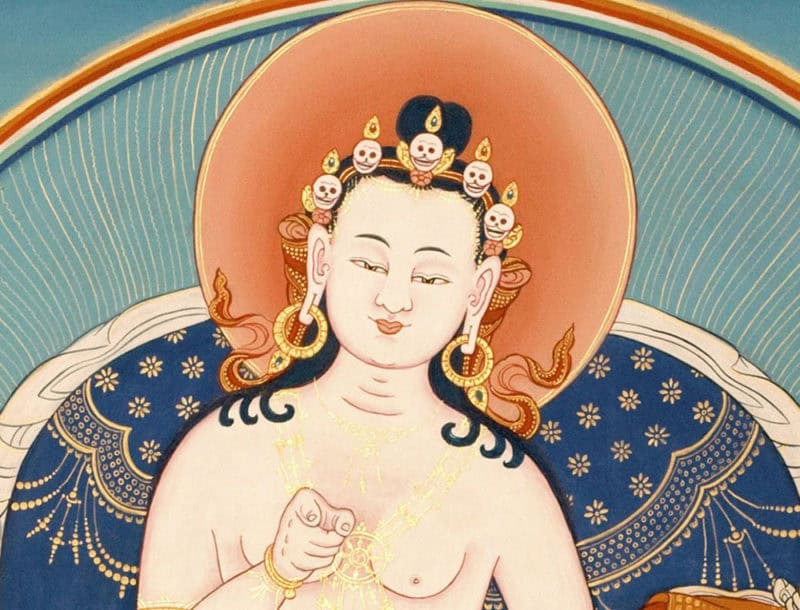

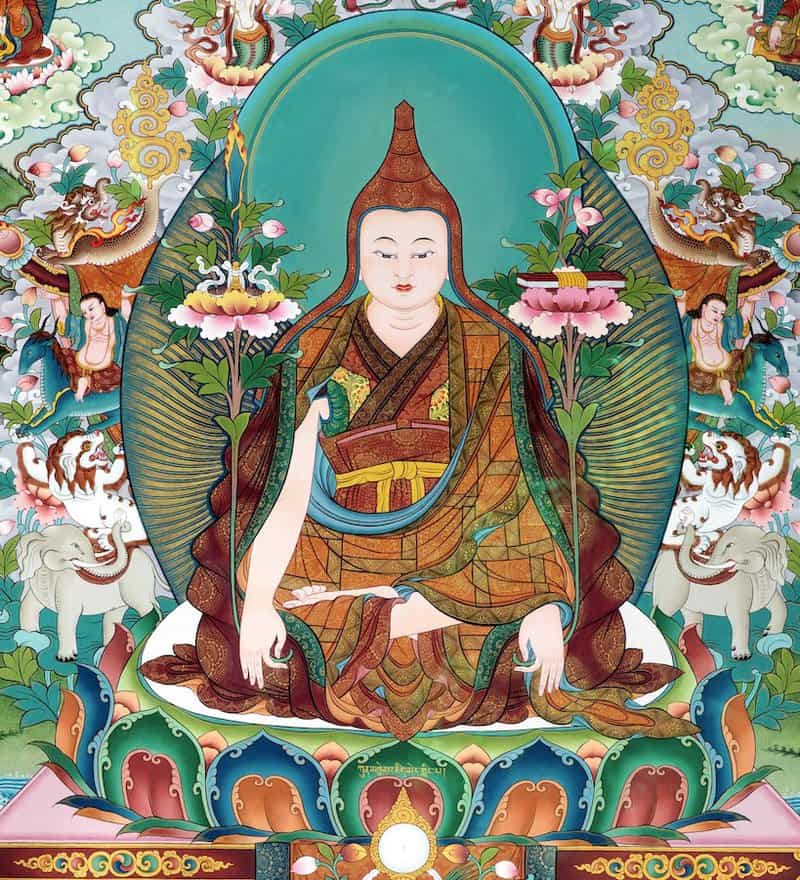
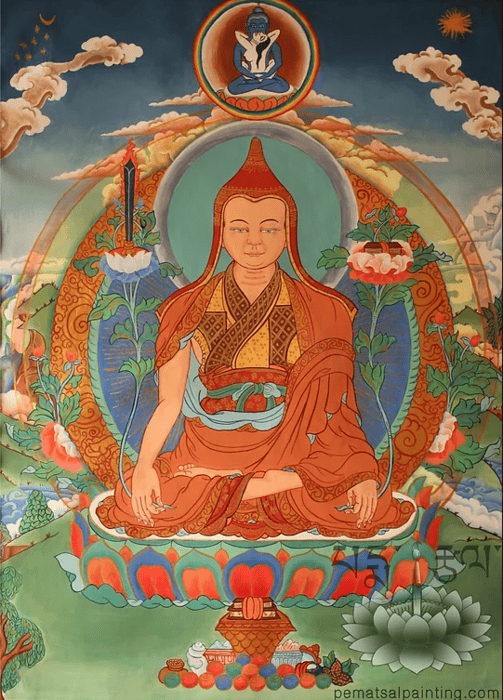

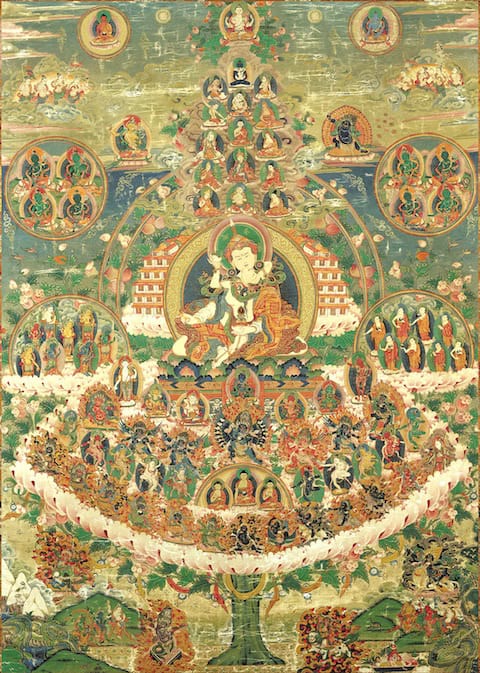
Well explained. I found that it is quite challanging to maintain recognition of rigpa because we are easily caught up by our daily activities so we forget the rigpa. Understood that when we forget we simply come back to rigpa. Do you have tips to share about this?
Thanks Ali, much appreciated.
I’ve used a number of things to help with slipping back into the contraction of conceptual mind so I can come back to Rigpa.
Most powerful for me is to use reminders on my phone. It’s set to vibrate once every 15 minutes – something I feel in my pocket, but not audible to the world. As Dzogchen emphasises the ‘short moments, many times’ type approach I find it’s really useful and powerful to have this sort of reminder to ‘wake up’ and come back to Rigpa. It helps so much to make Rigpa a ‘habit’ if you frequently experience the difference between being lost in the contraction, and Rigpa. There’s something in that transition that imprints what a better place it is to be than being lost in dualistic mind. So maybe that would help you? I get around 60 reminders a day in that way to ‘come home’.
I also use something I relied on many years ago in my early days, which is triggers when I act in the world. You set this up so that each time you do a certain action then it reminds you to return to Rigpa (if you’ve lost it). For example, each time you go through a door, or put on the kettle, or turn on a light switch, etc, etc. Again these things happen multiple times a day, and trigger you to remember Rigpa. They are physical actions so you can’t really miss the reminder.
Beyond the triggers which are very direct methods I feel certain things help in a more general way. In a sense the general ones are helping you not get lost so much in the first place. The direct ones are helping more with making Rigpa a lived presence.
I make sure I spent at least one period a day of doing absolutely nothing – just sitting or stopping wherever I am, without even the intention for recognising and resting in Rigpa. Just to stop and rest. This stillness and silence is very conducive to practice, I find.
I do set an intention at times to recognise and rest in the recognition of Rigpa. Setting intentions is always a powerful thing. You might not see a direct correlation between the moment of setting intention and results, but I feel very confident it has an effect which ripples outwards.
When I am doing something quite sensory, such as walking in woods, or by the sea, then I like to come to the direct awareness of the sensory field itself, and let the labelling go. Those periods of just experiencing without concepts are again helpful for the general shifts here. I like to notice if I’ve got an inner commentary like ‘that’s a nice leaf’ or ‘what a beautiful sky’ – not to push thoughts away, but letting that settle and letting myself be with the sensations themselves. Rigpa is a step away from that, so periods of bare sensation without intense commentary or conceptualisation are helpful. Many physical activities work that way for me.
In distinction to the above, sometimes I like to bring recognition to all appearances being none other than empty awareness. Those appearances are just as transparent and empty as what they appear to arise from (or not arise from). They are really nondual, just a magical display and not in any way solid or separate. So this recognition helps with the ability to remain in Rigpa, as it helps to melt or dissolve the gravitational force to get lost in the appearances. They don’t magnetise as much. This then feeds back into the ability to stay in Rigpa, as you are undercutting the tendency to lose it by being bewitched by appearances.
I hope there’s something that helps there Ali?
What do you use to help with this? I’d be interested to know.
take care ….
This post is excellent, thank you!
Thanks Paulo, I appreciate it.